
What is La Sagrada Familia neigborhood?
First of all, La Sagrada Familia cathedral is one of the most visited by tourists attractions in Spain.
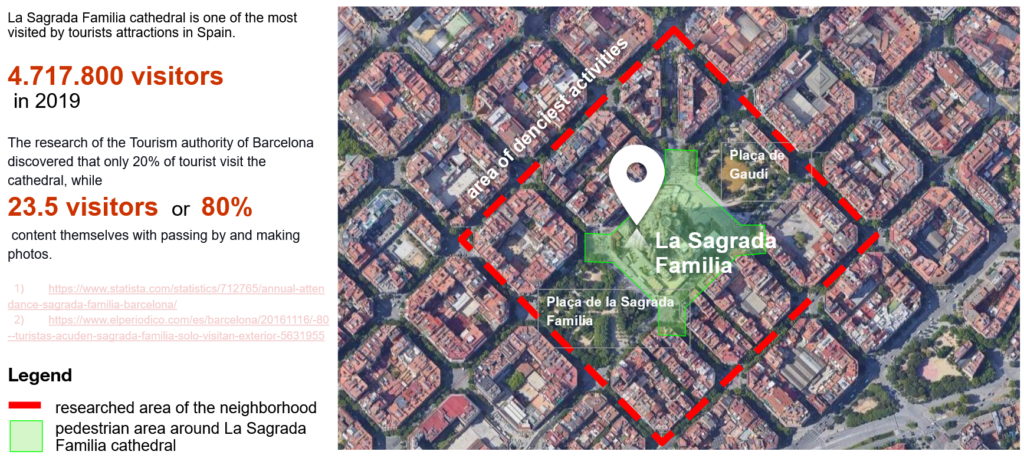
History of La Sagrada Familia Quartier. Urban design issue
Initially, Antonio Gaudi, while in charge of designing La Sagrada, envisioned removing two inhabited blocks in front of the main facade of Gloria facing Carrer de Mallorca in order to provide space for a wide and sumptuous entrance with stairs and fountains.
5 more architects followed him and the construction is still ongoing not resolving the issues of the main entrance plaza.
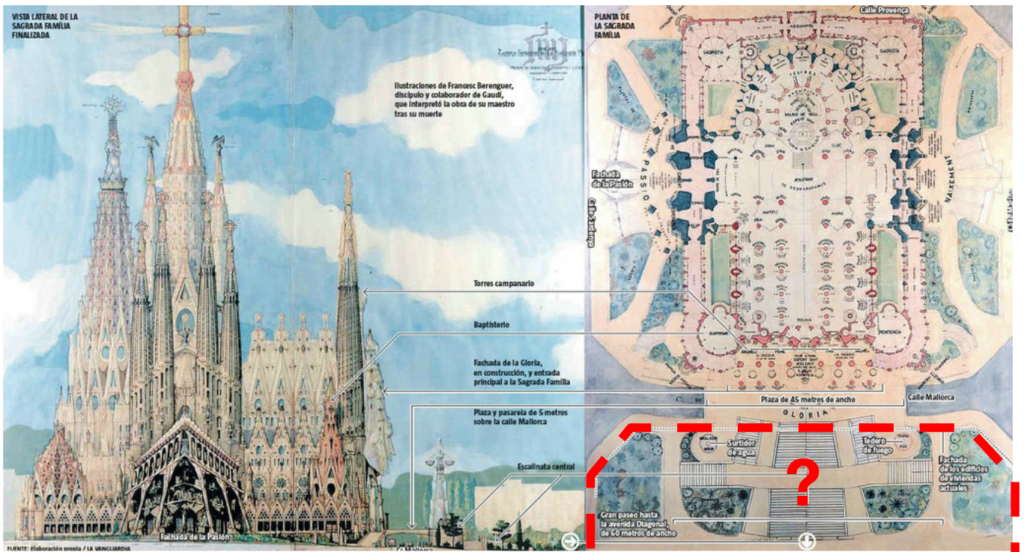
This issue still exists and is an object of wide urbanism discussion. Discussion on La Sagrada Familia Quartier. 8 options after completion- Discussion on the organization of the space around la Sagrada Familia goes on more than 100 years long. Alternative urban designs of La Sagrada Familia Quartier include 8 options and the subject of wide public discussion.
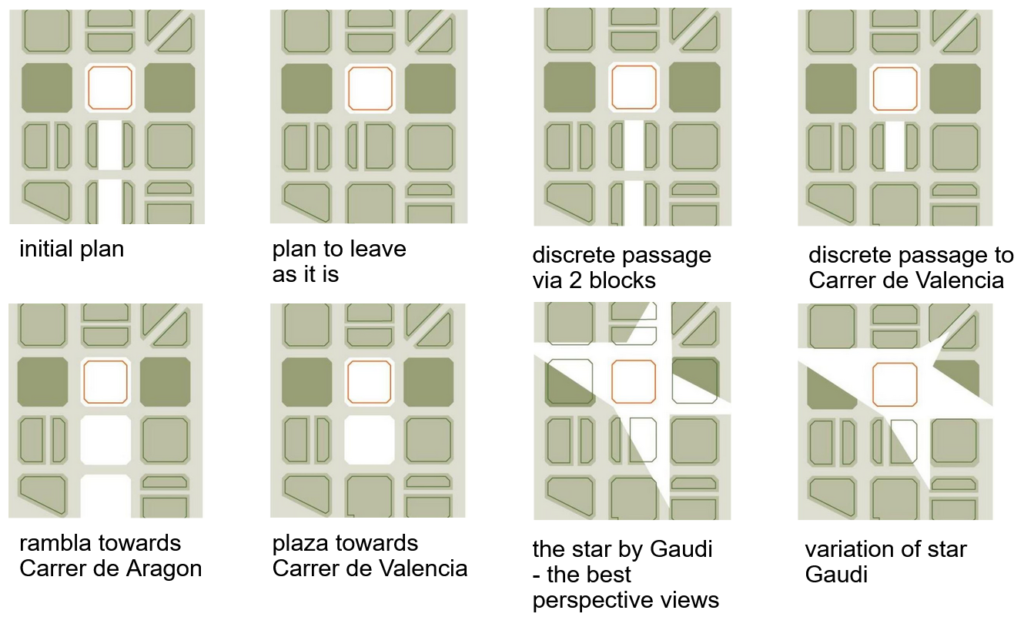
Discussion on the organization of the space around la Sagrada Familia goes on more than 100 years long. Alternative urban designs of La Sagrada Familia Quartier include 8 options and the subject of wide public discussion.
source: https://www.lavanguardia.com/listas/20131220/54398409369/ocho-opciones-acabar-sagrada-familia.html
Neighborhood area. Road network analysis

Road network hierarchy was developed along the main Barcelona’s urban axis of Avinguda Diagonal and the collector street Passeig de Sant Joan. All streets work as residential, and rare of them including Avinguda de Gaudi are pedestrian.
Neighborhood area. Public transportation

Neighborhood area. Ground floor activities map

Site observation
While visiting the site we noticed more details, not obvious from the mode of online study. Pop-up retail, jaywalking, pedestrian congestion, and lost value of La Sagrada on the ground floor level, especially because of the fence, merchandise stalls, and cars. Some visitors use the cathedral as a scene for personal Instagram stories of success.
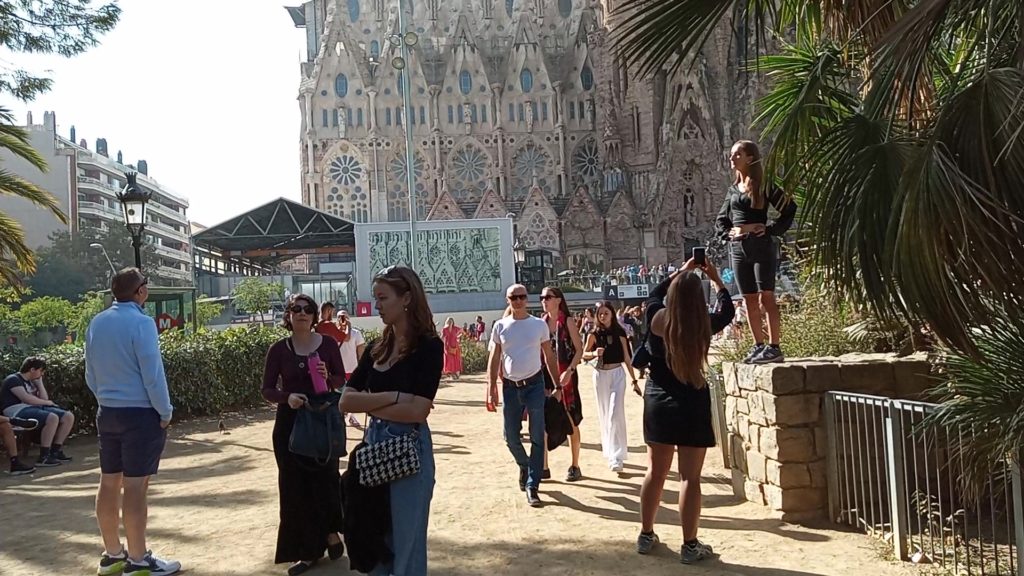
Identification of urban intervention area. Clipping frames for research
The part of Carrer Sardegna between La Sagrada cathedral and park Placa La Sagrada Familia contains the most complex situation. Considering issues of balancing car and pedestrian traffic, the potential value of new public space and the feasible frame for the case study this area fits the most for a future mobility project.
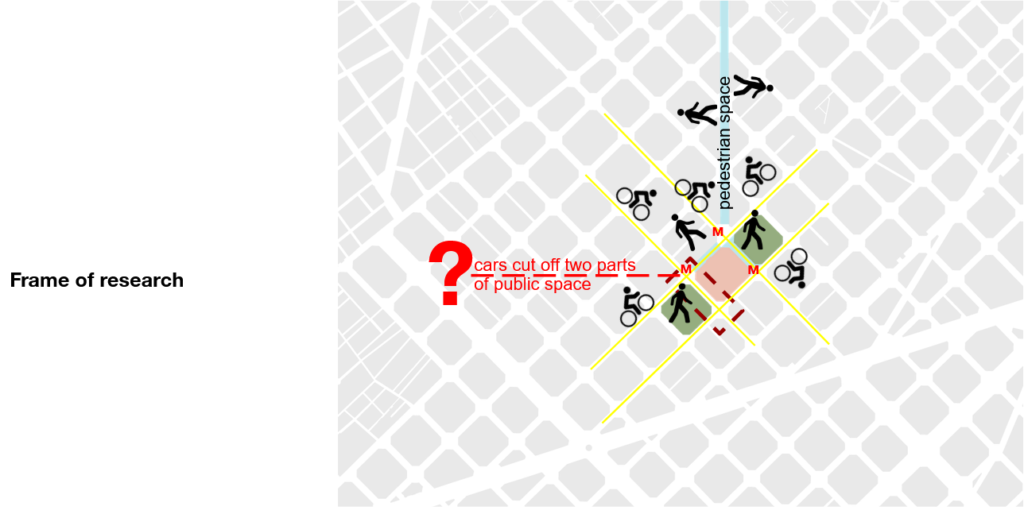
Identification of urban intervention area. Zoom in

Key features of recreated pedestrian space consider:
1) Enhanced shadow design,
2) Reintroduction of visual points and enhance the value of space,
3) Provide scene for two and more scenarios for different types of activities.
Problem areas. Car traffic cuts off high density public spaces

Site analysis. Street sections
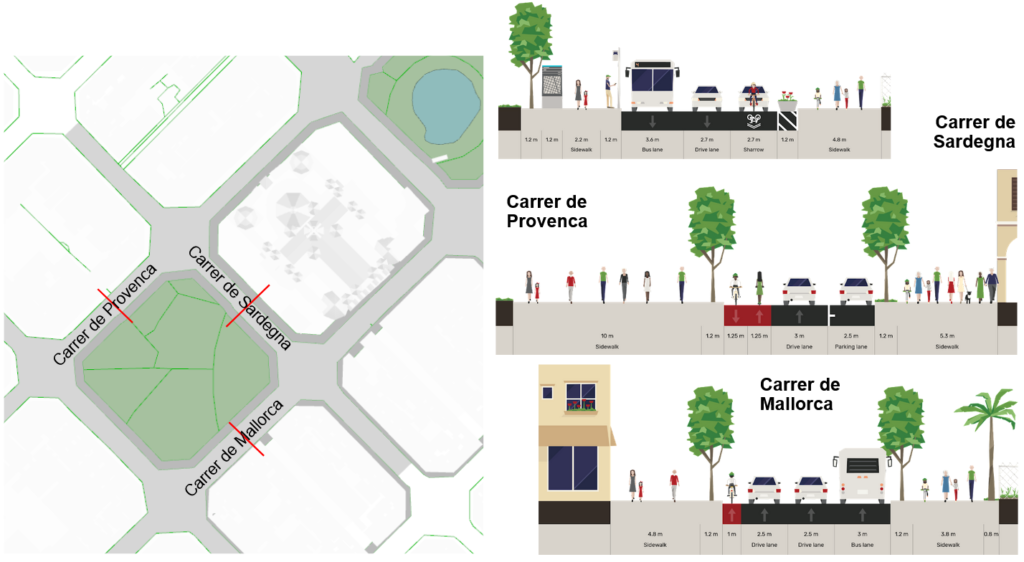
Problem Areas Identified
- Jaywalking and pedestrian congestion
- Tourist bus stops
- Street pop-up retail
- Insufficient shadow design
- Lost value of public space
Jaywalking and pedestrian congestion
The first our observation unveiled the presence of urban guard at each corner of crossroads, and their manual regulation of bicycle traffic that overlapping the initial road markup. Considering the haphazard movement of the pedestrian flow, ubiquitous jaywalking, bicycle and motorized vehicle congestion, we selected this location in order to develop a feasibility study for the resolution of such complex traffic circumstances.
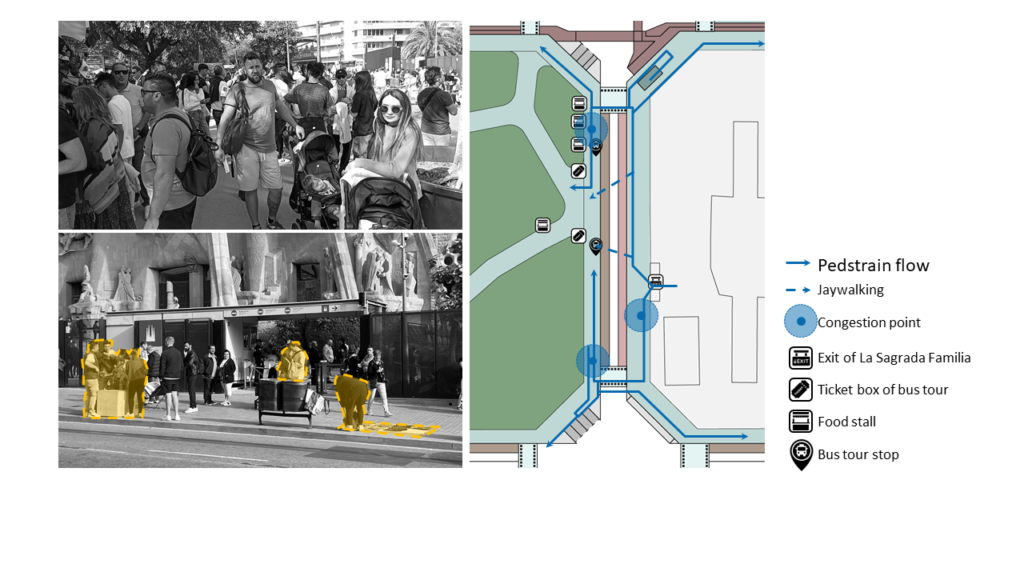
Tourist bus stops
Tourist bus stops generate flow of 2 mln passengers per year. 1 bus arrives every 5 minutes. Around 600 people circulate through the bus stop of Route Azul every 1 hour.
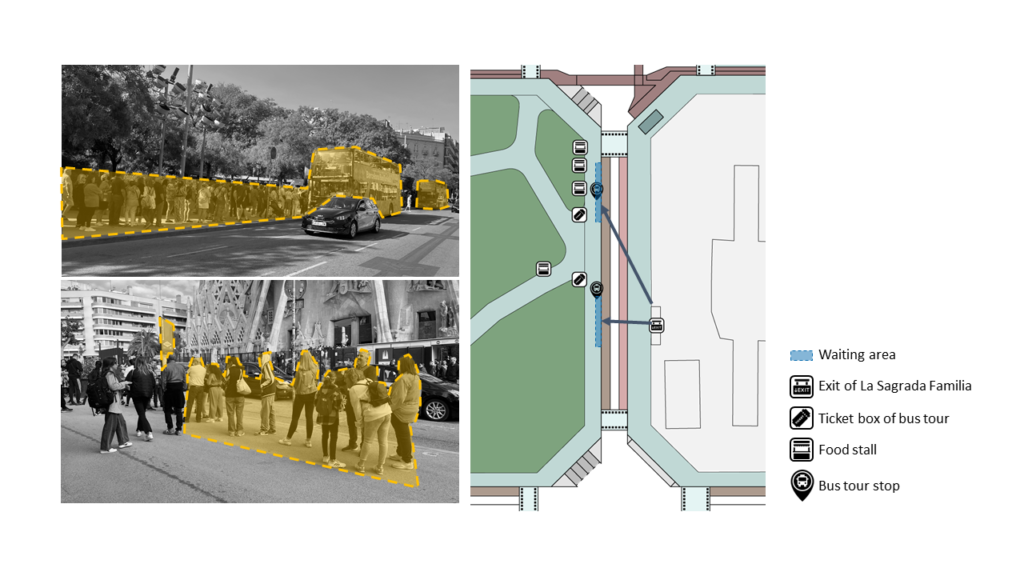
Street pop-up retail
The kiosks and pop-up merchants located along the pavement.
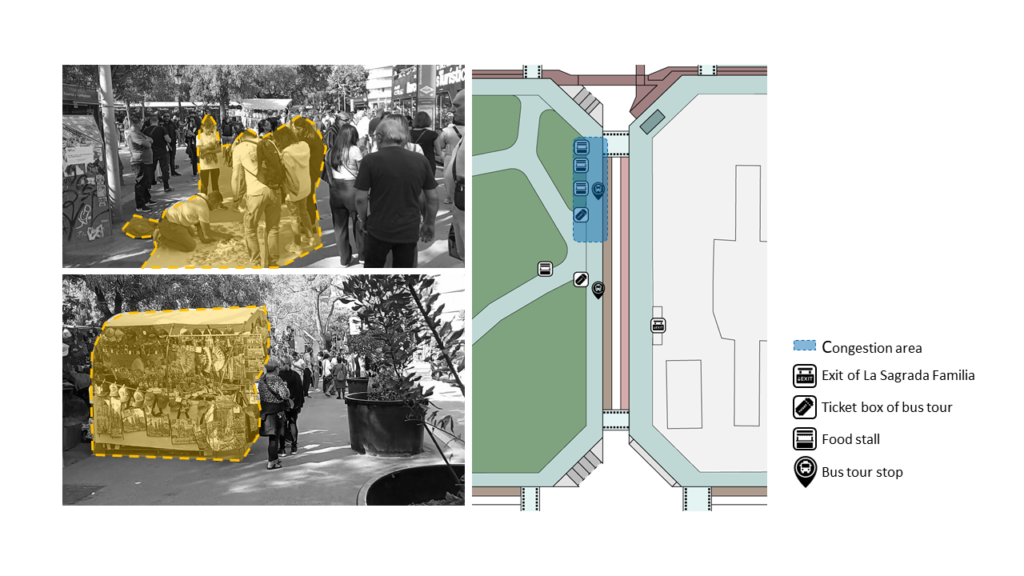
Insufficient shadow design
Lack of appropriate shading for users of public spaces
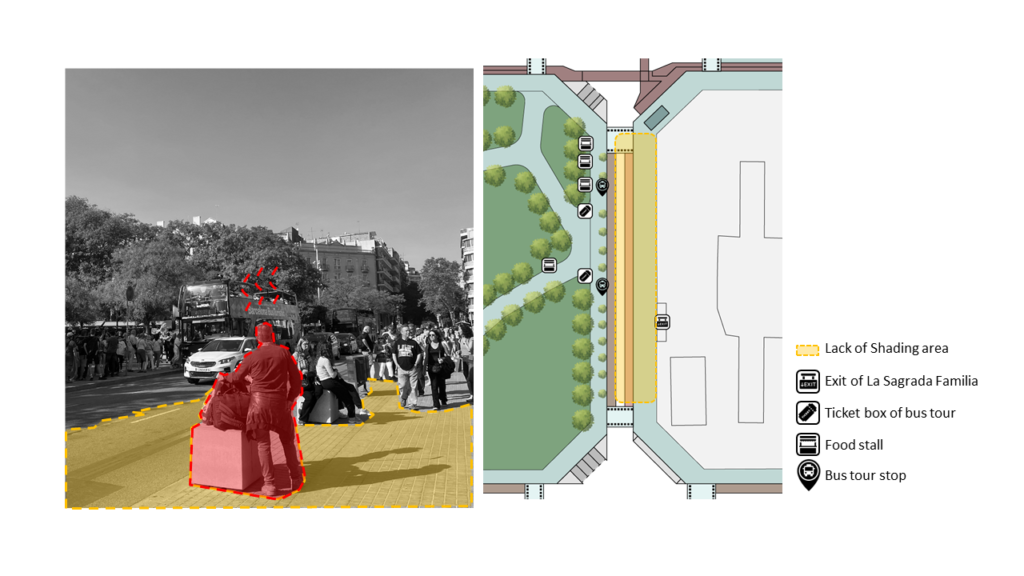
Lost value of public space
Lost value of the space of Basilica. The enormous fence, cars, buses and pop-up merchant stalls.

Pedestrian modelling: existing condition
Site analysis – Origin Destination Matrix

Pedestrian mobility (Mass-Motion simulations). Existing conditions

Pedestrian mobility (Mass-Motion simulations).
Design proposal of pedestrianization of Carrer Sardegna
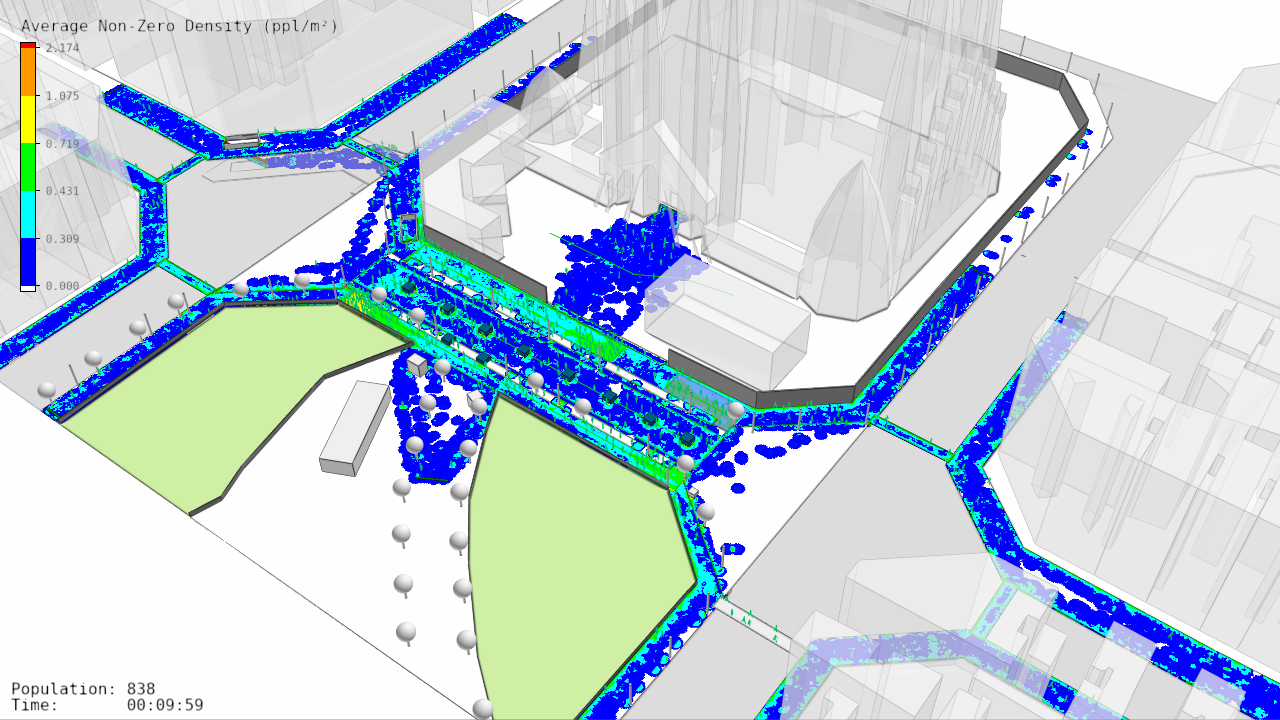
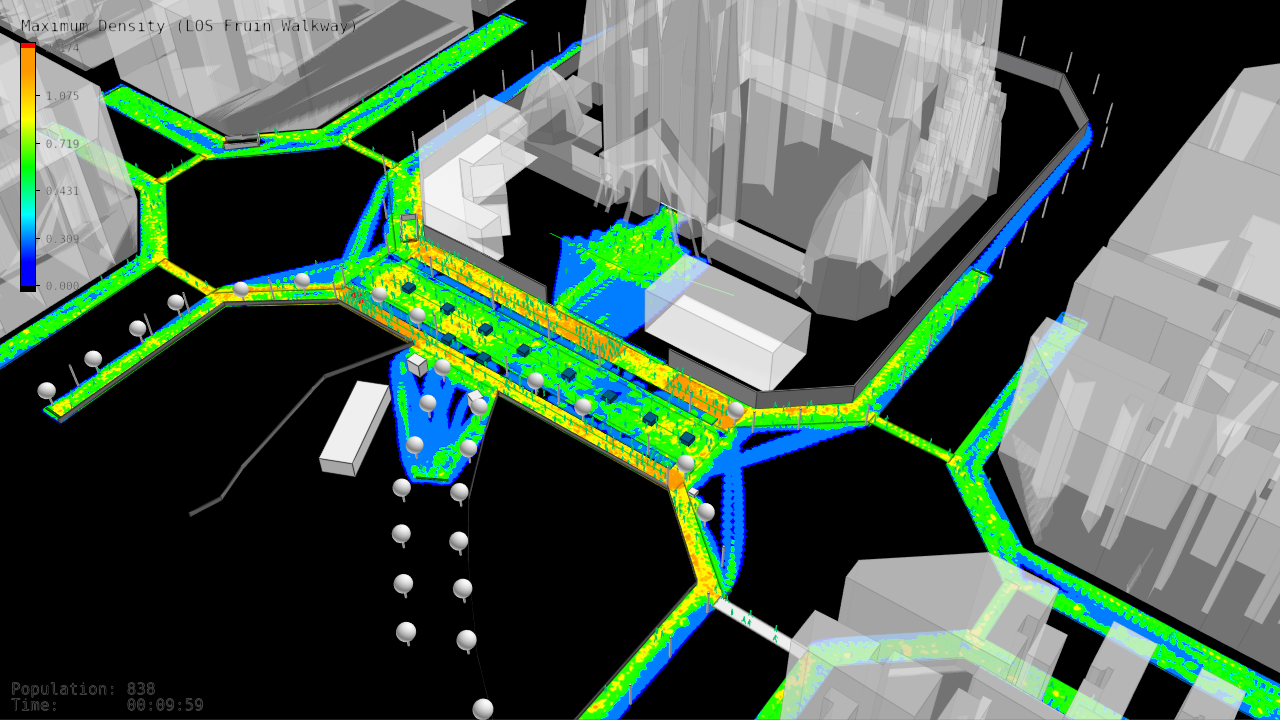
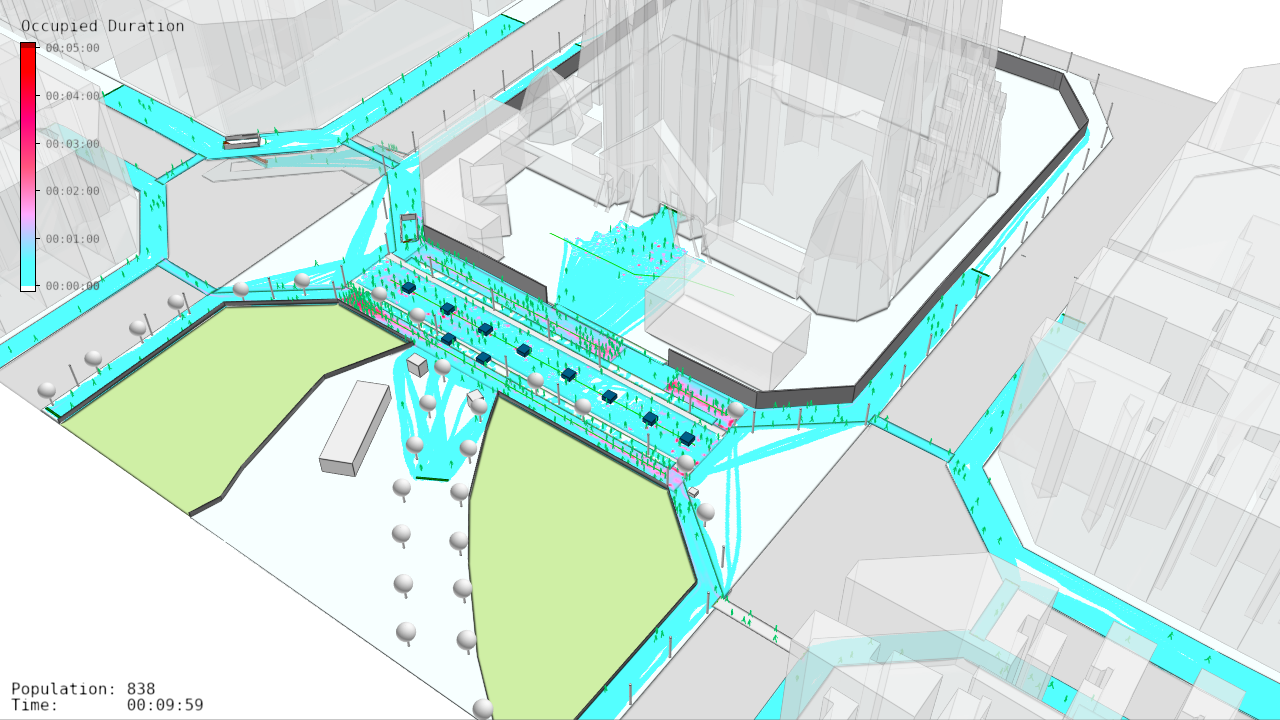
Public space design proposal
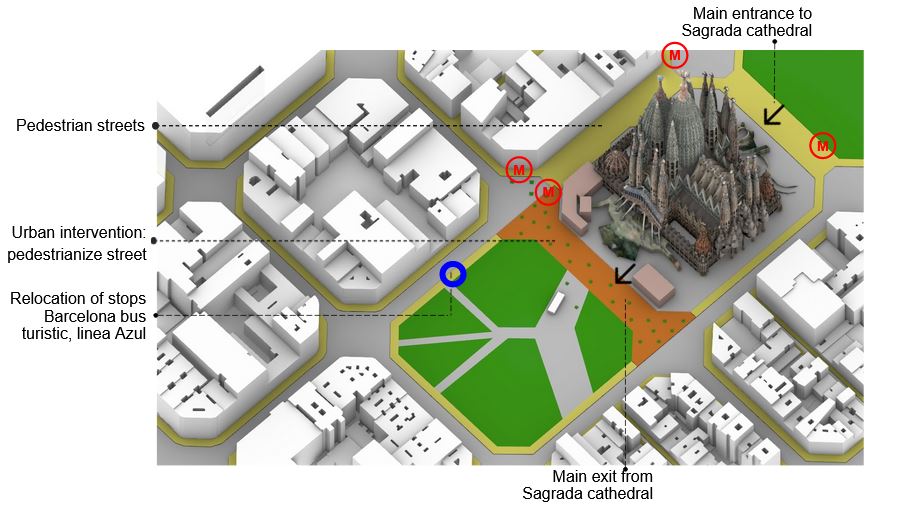
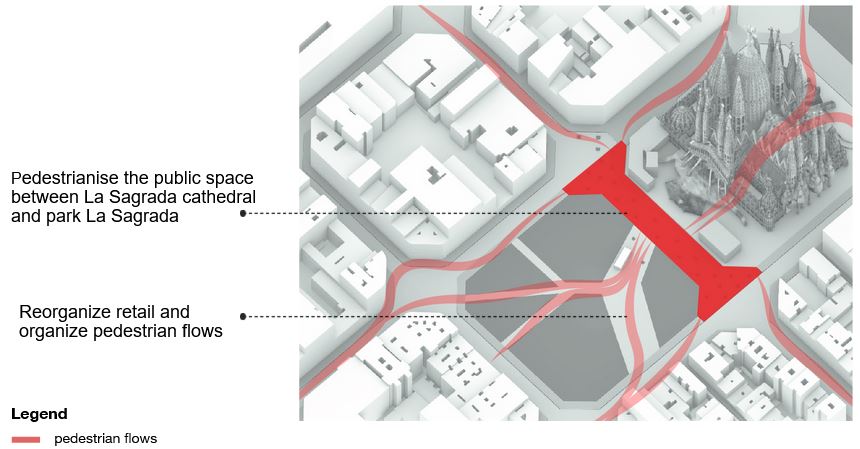
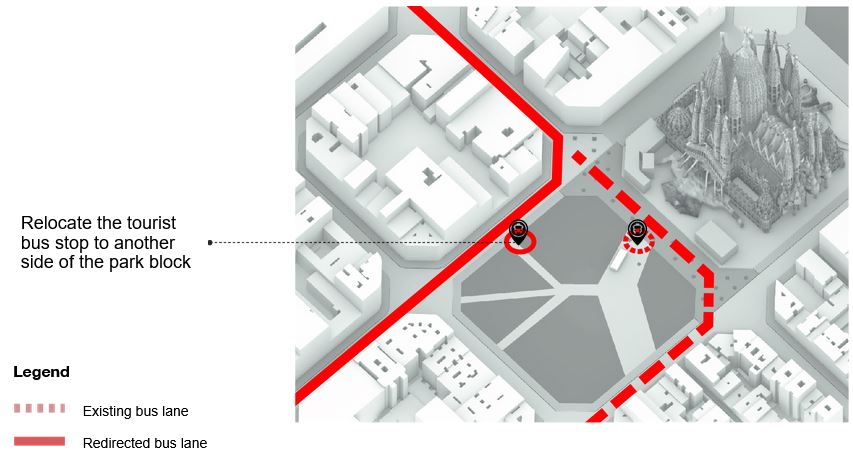
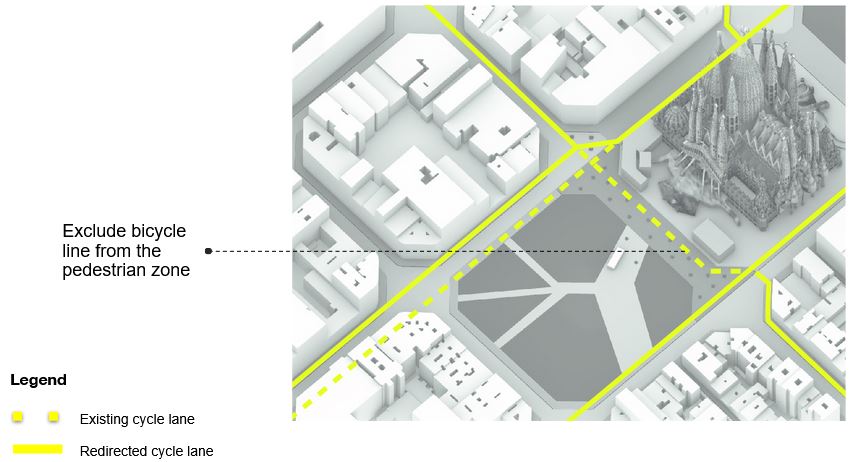
?Main idea – to pedestrianise the space between La Sagrada cathedral and park La Sagrada.
?Reorganize retail and organize pedestrian flows.
?Relocate the tourist bus stop to another side of the park block
?Two scenarios – tourist mode and festival mode.
?Provide viewpoints – movable hills, shadow design – transformable flower-like tensile structures.
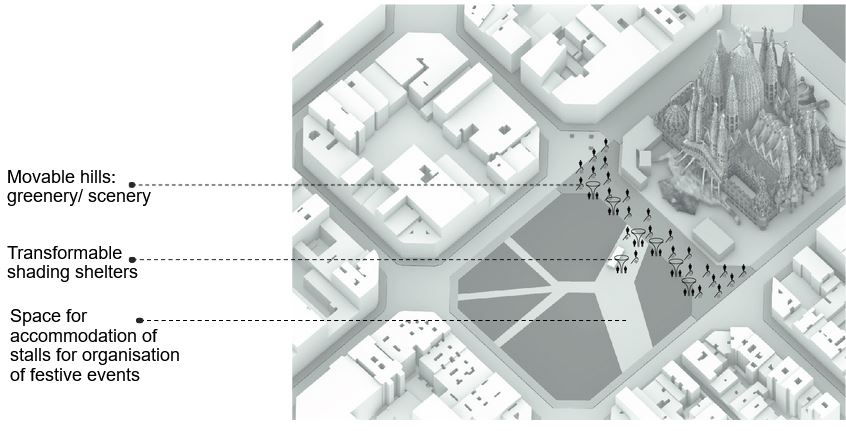
References:
1.https://www.statista.com/statistics/712765/annual-attendance-sagrada-familia-barcelona/
3.https://www.lavanguardia.com/listas/20131220/54398409369/ocho-opciones-acabar-sagrada-familia.html

